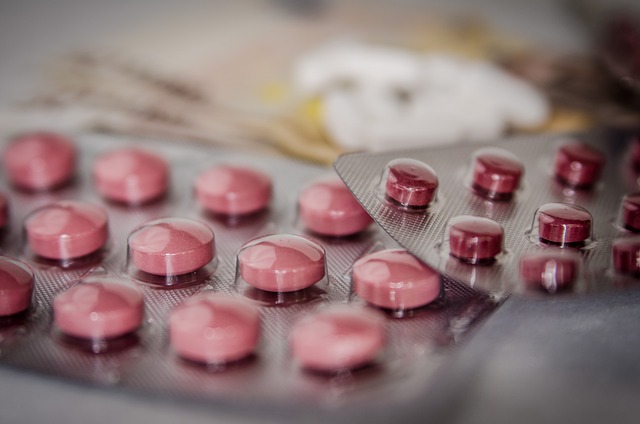Chronopharmacokinetics: Timing Medication for Optimal Effectiveness
The intersection of circadian rhythms and drug metabolism is revolutionizing how we approach medication administration. Chronopharmacokinetics, a cutting-edge field in pharmacology, explores how the body's internal clock influences drug absorption, distribution, metabolism, and excretion. Could the timing of your medication be just as crucial as the dose itself?

Research has shown that the efficacy and side effects of many drugs can vary depending on the time of day they are administered. This is due to circadian variations in factors such as gastric acid secretion, liver enzyme activity, blood flow to different organs, and hormone levels.
The Rhythm of Drug Metabolism
Our bodies operate on a 24-hour cycle, with different organs and systems functioning at varying levels throughout the day and night. These fluctuations can significantly affect how drugs are processed in the body:
-
Absorption: Gastric acid secretion and gastrointestinal motility vary throughout the day, affecting drug absorption rates.
-
Distribution: Blood flow to different organs changes over 24 hours, influencing how drugs are distributed throughout the body.
-
Metabolism: Liver enzyme activity fluctuates, impacting how quickly drugs are broken down.
-
Excretion: Kidney function and urine production vary, affecting drug elimination rates.
Understanding these rhythms allows healthcare providers to optimize medication schedules for maximum benefit and minimal side effects.
Chronotherapy: Tailoring Treatment to the Body’s Clock
Chronotherapy is the practical application of chronopharmacokinetics, aiming to synchronize drug administration with the body’s circadian rhythms. This approach has shown promising results in various medical fields:
-
Cardiovascular medications: Blood pressure medications are often more effective when taken at night, as blood pressure naturally rises in the early morning hours.
-
Cancer treatments: Some chemotherapy drugs have shown improved efficacy and reduced side effects when administered at specific times of day.
-
Asthma management: Corticosteroid inhalers may be more effective when used in the evening, as airway function tends to worsen at night.
-
Pain management: The body’s pain threshold varies throughout the day, influencing the optimal timing for analgesic medications.
Challenges and Future Directions
While chronopharmacokinetics offers exciting possibilities for improving treatment outcomes, several challenges remain:
-
Individual variations: Circadian rhythms can differ between individuals, making it challenging to create standardized chronotherapy protocols.
-
Lifestyle factors: Modern lifestyles, including shift work and jet lag, can disrupt natural circadian rhythms, complicating chronotherapy approaches.
-
Drug interactions: The timing of multiple medications must be carefully coordinated to avoid potential interactions.
-
Technological integration: Developing smart drug delivery systems that can automatically adjust dosing times based on an individual’s circadian patterns is an area of ongoing research.
Future directions in chronopharmacokinetics include personalized chronotherapy based on genetic profiles and wearable technology that can monitor and adapt to an individual’s unique circadian rhythms.
The Role of Chronopharmacokinetics in Precision Medicine
As we move towards more personalized healthcare, chronopharmacokinetics is poised to play a crucial role in precision medicine. By considering not just what medication to prescribe, but when to administer it, healthcare providers can optimize treatment efficacy and minimize side effects.
This approach could be particularly beneficial for patients with chronic conditions requiring long-term medication use. By aligning drug administration with the body’s natural rhythms, we may be able to achieve better disease management with lower doses, potentially reducing the risk of adverse effects and improving patient compliance.
Chronopharmacokinetics: Key Insights
-
The effectiveness of many medications can vary by up to 50% depending on the time of day they are taken.
-
Our liver’s ability to metabolize drugs can be two to three times greater at certain times of the day.
-
The symptoms of many diseases, including asthma, arthritis, and heart attacks, show circadian patterns, peaking at specific times.
-
Chronotherapy has been shown to improve outcomes in cancer treatment, with some studies reporting up to 50% higher five-year survival rates when chemotherapy is timed correctly.
-
The field of chronopharmacokinetics is expected to grow significantly, with the global chronomedicine market projected to reach $3.5 billion by 2026.
As we continue to unravel the intricate relationship between our body’s internal clock and drug metabolism, chronopharmacokinetics promises to transform how we approach medication administration. By aligning treatment schedules with our natural biological rhythms, we may unlock new levels of therapeutic efficacy and patient care. The future of medicine isn’t just about what we take, but when we take it.




